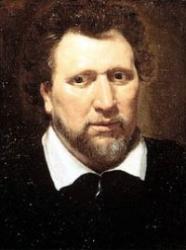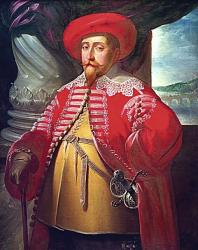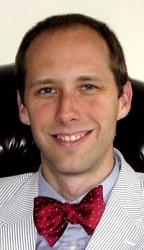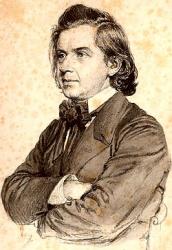Planning worship?
Check out our sister site, ZeteoSearch.org,
for 20+ additional resources related to your search.
- |
User Links
Person Results
Alexander Ramsay Thompson
1822 - 1895 Person Name: Alexander R. Thompson Meter: 8.8.7.8.8.7 Translator of "Zion, to thy Saviour singing" in The Hymnal Thompson, Alexander Ramsay, D.D., a minister of the American Reformed Dutch Church, was born at New York, Oct. 22, 1822, and graduated at the New York University, 1842, and the Princeton Seminary, 1845. He was Reformed Dutch Pastor at various places, including East Brooklyn, St. Paul's (R. P. D.), New York City, North Reformed Church, Brooklyn (1874), and others. Dr. Thompson was joint editor of the Reformed Dutch Hymns of the Church, N. Y., 1869, and the Hymns of Prayer and Praise, 1871. He has contributed original hymns and translations from the Latin to these collections, to Schaff’s Christ in Song, 1869, and to the Sunday School Times, Philadelphia, 1883, &c. In addition two original hymns:—
1. 0 Thou Whose filmed and fading eye. Good Friday.
2. Wayfarers in the wilderness. Life a Pilgrimage.
are in the Hymns of the Church, 1869, with the signature "A. R. T." [Rev F. M. Bird, M.A.]
-- Excerpts from John Julian, Dictionary of Hymnology (1907)
Alexander Ramsay Thompson
Juanita R. de Balloch
1894 - 1959 Person Name: J. R. de Balloch Meter: 8.8.7.8.8.7 Translator of "No temas tú, pequeña grey" Born: 1894, Spain.
Juanita R. de Balloch
Henry Mills
1786 - 1867 Person Name: H. Mills Meter: 8.8.7.8.8.7 Translator of "Near the cross was Mary weeping" in The Lutheran Hymnary Mills, Henry, D.D., son of John Mills, was born at Morriston, New Jersey, March 12, 1786, and educated at the New Jersey College, Princeton, where he graduated in 1802. After being engaged in teaching for some time at Morristown and elsewhere, he was ordained Pastor of the Presbyterian Church of Woodbridge, New Jersey, in 1816. On the opening of the Auburn Theological Seminary in 1821, he was appointed Professor of Biblical Criticism and Oriental Languages, from which he retired in 1854. He died at Auburn, June 10, 1867. In 1845 he published Horae Germanicae; A Version of German Hymns. This was enlarged in 1856. The translations are not well done, and very few are now in common use, although 18 and 9 doxologies were given in the Lutheran General Synod's Collection, 1850. Many are noted in the articles on German hymnwriters and hymns throughout this Dictionary. [Rev. F. M. Bird, M.A.]
--John Julian, Dictionary of Hymnology (1907)
Henry Mills
Ben Jonson

1573 - 1637 Person Name: B. Jonson, c. 1572-1637 Meter: 8.8.7.8.8.7 Author of "I Sing the Birth" in Evangelical Lutheran Hymnary Jonson, Benjamin, commonly known as Ben Jonson, the son of a clergyman, was born at Westminster in 1573, and educated at Westminster School, and St. John's, Cambridge. He died in London, Aug. 6, 1637. His history and dramatic abilities are well known to all students of English literature. He is known in association with hymnody mainly through his carol, "I sing the birth—was born tonight," which is still in use. It is given in his Underwoods in the 2nd vol. (folio) of his Works, 1640, and entitled "A Hymn on the Nativity of my Saviour." Two additional hymns therein, "The sinner's sacrifice" and "A Hymn to God the Father," have much merit, but are unsuited for congregational use. His Works have been edited by Gifford, and more recently by Lieut. Col. Francis Cunningham.
--John Julian, Dictionary of Hymnology, Appendix, Part II (1907)
=================
Jonson, Ben, p. 606, i. His “Hymn to God the Father," beginning “Hear me, O God. A broken heart," is in Turing's Collection, 1882, in an abridged form.
--John Julian, Dictionary of Hymnology, Appendix, Part II (1907)
Ben Jonson
Joseph Anstice
1808 - 1836 Meter: 8.8.7.8.8.7 Author of "Darkly Rose the Guilty Morning" in The Cyber Hymnal Anstice, Joseph , M.A., son of William Anstice of Madeley, Shropshire, born 1808, and educated at Enmore, near Bridgwater, Westminster, and Ch. Church, Oxford, where he gained two English prizes and graduated as a double-first. Subsequently, at the ago of 22, he became Professor of Classical Literature at King's College, London; died at Torquay, Feb. 29, 1836, aged 28. His works include Richard Coeur de Lion, a prize poem, 1828; The Influence of the Roman Conquest upon Literature and the Arts in Rome (Oxford prize Essay); Selections from the Choice Poetry of the Greek Dramatic Writers, translated into English Verse, 1832, &c. His hymns were printed a few months after his death, as:— Hymns by the late Joseph Anstice, M.A., formerly Student of Christ Church, Oxford, and Professor of Classical Literature, King’s College, London, Bridgwater, 1836, and thus introduced:—
"As none of the following Hymns had the advantage of being corrected and prepared for the press by their lamented Author, his family have not considered themselves at liberty to bring them before the public; but, having reason to believe that a large circle of surviving friends will be gratified by possessing a memorial of the manner in which some of his leisure hours were employed, and of the subjects which chiefly occupied his thoughts, during the last few months of his life, they have consented to their being printed for private distribution.—-Bridgwater, June, 1836."
This work contains 52 hymns on various subjects, together with a poem "To my Hymn Book." The circumstances under which they were written are thus detailed by Mrs. Anstice in a communication to the Rev. Josiah Miller, author of Singers and Songs of the Church:—
"The hymns were all dictated to his wife during the last few weeks of his life, and were composed just at the period of the day (the afternoon) when he felt the oppression of his illness—all his brighter morning hours being given to pupils up to the very day of his death."-—S. & S., p. 495.
A few of the hymns are of a joyful character, but the circumstances under which they were written account for the prevailing tone of sadness by which they are chiefly characterized. About one half of these hymns were included by Mrs. Yonge in her Child's Christian Year, 1841. Being thus brought before the public, many soon came into common use. Those in most extensive use are: "Father, by Thy love and power;" "In all things like “Thy brethren, Thou;" "Lord of the harvest, once again;" and, "O Lord, how happy should we be."
-- John Julian, Dictionary of Hymnology (1907)
Joseph Anstice
Gustav II Adolf

1594 - 1632 Person Name: Gustavus Adolphus, 1594-1632 Meter: 8.8.7.8.8.7 Author of "Be not Dismayed" in Hymnal and Order of Service
Gustav II Adolf
Joshua Drake

b. 1979 Person Name: Joshua F. Drake Meter: 8.8.7.8.8.7 Author of "O Christian Home" in The Cyber Hymnal Born: September 27, 1979, Nashville, Tennessee.
Drake grew up on 40 acres of land that had been in his family for three generations. While studying Sacred Music at Union University in Jackson, Tennessee, he became interested in sustaining the church’s hymnody, and developed a love for poetry. In 2001, he went to pursue postgraduate studies in Musicology at the University of Glasgow, Scotland, where he graduated with a M.Mus. in 2003. As of 2006, he was pursuing his Ph.D. on late 15th Century Latin motets. He teaches Humanities and Music Theory at Grove City College, Pennsylvania, and worships at the Rocky Springs Presbyterian Church in Harrisville.
--www.hymntime.com/tch
Joshua Drake
Niels W. Gade

1817 - 1890 Person Name: N. V. Gade Meter: 8.8.7.8.8.7 Composer of "[To Thee, O Jesus, thanks are due]" in Hymnal for Church and Home Niels Wilhelm Gade (22 February 1817 – 21 December 1890) was a Danish composer, conductor, violinist, organist and teacher. He is considered the most important Danish musician of his day.
Gade was born in Copenhagen, the son of a joiner and instrument maker. He began his career as a violinist with the Royal Danish Orchestra, and saw his concert overture Efterklange af Ossian ("Echoes of Ossian") premiered with them in 1841. When his first symphony was turned down for performance in Copenhagen, he sent it to Felix Mendelssohn. Mendelssohn received the work positively, and conducted it in Leipzig in March 1843, to enthusiastic public reaction. Supported by a fellowship from the Danish government, Gade himself moved to Leipzig, teaching at the Conservatory there, working as an assistant conductor of the Gewandhaus Orchestra, and befriending Mendelssohn, who had an important influence on his music. In 1845 he conducted the premiere performance of Mendelssohn's Violin Concerto in E minor. He also became friends with Robert Schumann In Copenhagen Niels Gade became acquainted with the composer Cornelius Gurlitt, and they remained friends until the latter's death..
At Mendelssohn’s death in 1847, Gade was appointed to his position as chief conductor but was forced to return to Copenhagen in the spring of 1848 when war broke out between Prussia and Denmark.
In Copenhagen Gade became director of the Copenhagen Musical Society (a post he retained until his death) and, establishing a new orchestra and chorus, settled in to a career as the most prominent musician in Denmark. Under his direction, the Music Society reached its peak. He also worked as an organist; though he lost the prestigious position of organist at Copenhagen Cathedral to J.P.E. Hartmann, he served in the Church of Holmen in Copenhagen from 1850 until his death. Gade was joint director of the Copenhagen Conservatory with Hartmann (whose daughter he married in 1852) and Holger Simon Paulli. An important influence on a number of later Scandinavian composers, he encouraged and taught both Edvard Grieg and Carl Nielsen, as well as lesser figures such as Otto Malling, August Winding and Asger Hamerik. He died in Copenhagen.
Among Gade's works are eight symphonies, a violin concerto, chamber music, organ and piano pieces and a number of large-scale cantatas, Comala (1846) and Elverskud (1853) amongst them, which he called koncertstykker ("concert pieces"). These products, embraced post-1848 as works of Romantic nationalism, are sometimes based on Danish folklore. Apparently Gade never rated "Brudevalsen" (The Bridal Waltz), and assigned it to the waste paper basket from where, it is rumoured, it was rescued by August Bournonville, to become an essential part of a Danish wedding.
He married Emma Sophie Amalie Hartmann, daughter of J. P. E. Hartmann, in 1852. He remarried in 1857 after her death.
--en.wikipedia.org/wiki/
Niels W. Gade
P. C. Paulsen
1881 - 1948 Meter: 8.8.7.8.8.7 Translator of "All Ye Who Like the Birds Can Soar" Paul Christian Paulsen was born on March 26, 1881, in Alstrup, Jutland, Denmark.
He emigrated to America in 1904, was ordained in 1911, and served as a Lutheran pastor in Minnesota, Wisconsin, Illinois, California, and Alberta, Canada.
He died on July 26, 1948.
NN, Hymnary
P. C. Paulsen
C. J. Boye

1791 - 1853 Person Name: Casper Johannes Boye Meter: 8.8.7.8.8.7 Author of "Day Is Breaking, Night Is Ended" in Hymnal for Church and Home Caspar Johannes Boye was born in Kongsberg, Norway in 1791. He studied both law and theology at the University of Copenhagen, became a teacher and later served as rector in Søllerød, Helsingørand and Copenhagen. He died in 1853.
See also in:
Wikipedia
C. J. Boye


 My Starred Hymns
My Starred Hymns


